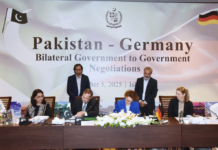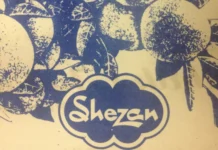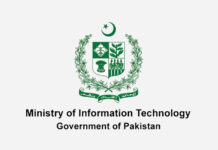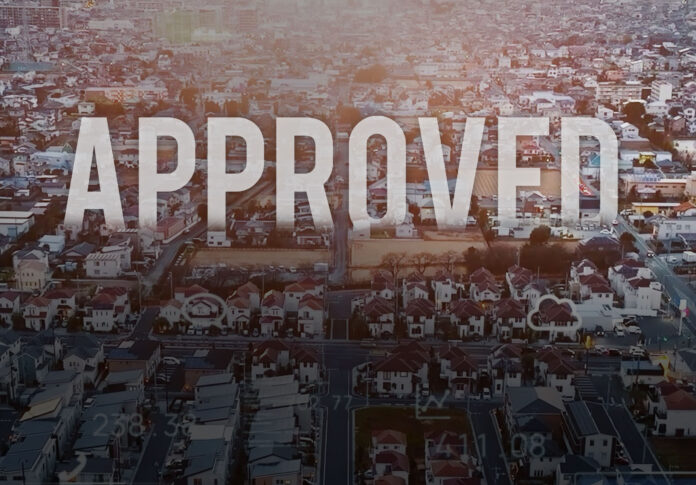A tiny detail has changed in the many massive billboards all over Lahore advertising housing societies. At every corner, every street, every turn in the city there is a billboard bearing the ad for some ridiculously shady project named something like XYZ Cooperative Society, ABC Gardens, 123 Villas, Al-Something-or-the-Other Town, and Mountain/River/Ocean City.
Most of these societies are unregistered, unapproved, and illegally advertising their projects. The pattern they follow is predictable. A real estate developer purchases a small tract of land in some godforsaken corner or outskirts of Lahore or an adjoining city. Before they create a masterplan or even acquire all the land, the developers start marketing their society and selling plots. The money generated from this is then used to fund the project, except when the funds inevitably dry up, lots of people are left stranded because their money is tied up in the project.
How do they get away with this? A lot of the time, these real estate developers simply lie. They put up signs and advertise their societies as if they have gotten approval from the relevant development authority when, in fact, they have not. As such, you’ll find plenty of billboards bearing the stamps of the LDA, RDA, GDA, and other such bodies. But in recent times, this little stamp of approval has been replaced by approvals from the Ravi Urban Development Authority (RUDA).
What is RUDA? The organisation has been around since 2019 and is responsible for developing a new city along the banks of the Ravi. Empowered by provincial legislation, RUDA has over time become a contentious body and has been dragged through the courts more than once. But as things stand, RUDA has confirmed to Profit they are giving approvals to different real estate projects. Those getting the approvals include the usual suspect, with Malik Riaz’s grandson a prominent name among those investing.
This means that the RUDA, which is already running the show unbridled along the banks of the Ravi, is now on a spree allowing private developers to come in and create housing societies. RUDA claims, however, they are doing things differently. Their approval process is more stringent according to them, but to what end is all of this happening?
The background to RUDA
The Ravi Riverfront Project is many things. At its best, it is a vain, bloated, misguided attempt that many environmentalists and hydrological experts have called an impending ecological and social disaster. At its worst, it is an uncaring attempt to turn the Ravi and its embankments into a playground for real estate developers that intend to treat it as a cash-cow for at least the next two decades. For better or worse, it has become a bone of contention with political undertones.
The idea for a riverfront project on the banks of the Ravi is not a new one. In fact, it was first proposed as far back as 2006, and underwent a feasibility study in 2013 under the PML-N government. The idea has long been a lucrative if elusive pipe-dream. Lahore, as many are aware, has swelled up and its urban sprawl has seen it become one of the most polluted cities in the world which regularly tops the global rankings for the worst air quality.
Ideas like the Ravi Riverfront Urban Development Project are the sort of sweeping solutions that populists like to extoll. Essentially, the Ravi riverfront is the plan to make a new city from scratch. The project would be Pakistan’s second-largest planned city after Islamabad, covering an area of 102,074 acres, catering to a population of up to 15 million people. It is an ambitious undertaking — one that is born as much out of a sense of frustration with the state of our urban centres as it is out of necessity. In fact, in a comprehensive and eye-opening article published in Dawn back in June 2021, it was pointed out that the development of new cities and riverfront projects is not unique to Pakistan, and that such projects and several new cities have been planned across Asia and Africa in recent years.
It is essentially a desire to start from scratch. To plan and control and build a city with the benefit of hindsight. The foundation rock for the utopian riverfront project was first laid in 2019 with the passage of the special legislation that established RUDA. The authority would not work under any other body in or related to Lahore, and would have complete control over the project. In fact, the Lahore Development Authority (LDA) and similar bodies in Gujranwala and Sialkot would be subservient to RUDA. So complete were the powers given to RUDA that not only was the authority entrusted with the entire responsibility for the project from planning, to acquisition, to development that the legislation which created RUDA granted the authority and its employees immunity from all legal proceedings, and “no court or other authority” can “question the legality of anything done or any action taken in good faith under this Act, by or at the instance of the Authority.”
From the get-go, the warning signs were present. The law that had created and empowered RUDA seemed to go beyond reasonable limits because of the lack of accountability that the authority had to office. By early 2021, when the project was in its early stages of acquiring land, troubles began to rise when local communities resisted selling their lands to the state after which RUDA announced that it would feel free to acquire the lands by force — something that article 4 of the special legislation that RUDA created allowed. The matter went to court. In January 2022, Justice Shahid Karim of the Lahore High Court (LHC) in a 298-page long judgement declared that the scheme was “unconstitutional” on the grounds that it lacked a master plan. Later, the SC would give the project relief although the matter is still Sub judice.
The process
So how exactly is RUDA going about approving societies, and will they be able to make sure they save the project from different kinds of frauds? To answer these pressing questions, Profit sat down with Colonel (Retired) Abid Latif, RUDA’s Director of Public Relations and Communications, in an exclusive interview. “Yes, the approval process for housing societies in Ravi City has begun but it’s not as simple as it appears,” he affirms.
He explains that every approval must align with RUDA’s master plan—a comprehensive blueprint designed to ensure the cohesive development of Ravi City. This master plan, he says, is the touchstone against which all projects are measured. Only those that fit seamlessly into this vision are granted approval.
Despite the flood of advertisements claiming RUDA’s endorsement, Colonel Latif reveals a surprising fact: so far, only two private housing societies have been fully approved, and even that approval comes with conditions. “The process is rigorous,” he notes, “designed to maintain the integrity and vision of Ravi City.”
“RUDA is not just constructing a new city—we are building a new standard of urban governance. Fraud prevention is a cornerstone of our strategy. By adhering strictly to the master plan, RUDA aims to create a transparent, accountable, and secure housing sector,” he added.
Colonel Latif further shed light on the intricacies of the approval process for housing societies and explained that RUDA has streamlined the approval process into two distinct modes, the first of which is the Provisional Planning Permission (PPP). This mode, particularly appealing to investors and sponsors, is designed for those who do not yet own land within RUDA’s jurisdiction.
To obtain PPP, a developer or investor must submit an application to RUDA, complete with a checklist of necessary documents. This checklist ensures that all required information is provided upfront, avoiding delays and ensuring a smooth evaluation process.
The journey to PPP begins with the developer identifying a location and presenting RUDA with the Khasra plan of the area, indicating their intention to establish a housing society on that land. RUDA then forwards the proposal to its internal planning department for a thorough evaluation against the master plan. This step is crucial to ensure that the proposed housing society does not encroach on government property or land designated for other RUDA projects. The planning department then generates a master plan compliance report. If the proposal aligns with the master plan, the approval process moves forward; if not, the developer must revise and resubmit their proposal.
Once the proposal is deemed compliant, the developer pays a scrutiny fee of Rs 2,000 per kanal of saleable area. For instance, if the society is to be built on five hundred kanals, its saleable area of approximately 250 kanals, the fee is calculated accordingly. Following this, the sponsor enters the scrutiny phase, during which they must present their financial statement, submit the required documents, agree to RUDA’s terms and conditions, and pay a Trunk Public Infrastructure Development (TPID) fee of Rs 800,000 per kanal of saleable area. To ease the financial burden, developers can pay twenty-five percent of the total fee upfront, with the remaining 75% payable quarterly over three years, for which investors must give post-dated checks to RUDA.
The verification process then kicks off, focusing primarily on the land title check. RUDA sends the locked Khasra numbers to the Additional Commissioner Revenue (ADCR) to verify that the land is not already acquired by the government or earmarked for a government project. If the land title is clear, the ADCR issues a No Objection Certificate (NOC). Given that the Ravi Urban Project spans two districts—Lahore and Sheikhupura—the relevant ADCR issues the NOC for their respective district.
After obtaining the NOC from the ADCR, we publish a public notice in various leading newspapers. This is done to invite any objections within fifteen days. If any objections are raised during this period, they need to be resolved first; otherwise, the process moves forward towards the technical approval.
Next, RUDA’s planning department forwards the report to the land department, detailing the locked Khasra numbers for the developer’s project. This step is essential to prevent disputes when the developer begins their project. A comprehensive report of the entire process is then prepared, with recommendations from RUDA’s internal wings sent to the RUDA CEO, who ultimately grants the investor PPP. However, PPP is valid for only one year. During this period, the investor must complete all the necessary approval processes. It’s a race against time in many ways. If they fail to do so within this one-year timeframe, they will have to pay the PPP scrutiny fee again to renew their provisional status.
However, it is important to note that PPP does not equate to receiving an NOC for the housing project; it is simply the first step for investors who do not yet own land within the Ravi Urban Project.
One major benefit for the developer in obtaining PPP is that it allows them to proceed with a soft launch of their project and market it. By granting PPP, RUDA also generates a significant amount of revenue through fees such as the TPID fee and scrutiny fee. This revenue is utilised for RUDA’s infrastructure, development works, and river restoration projects.
When asked if it would be difficult for an investor to complete the entire process within a year, considering that if the land is not acquired within that time or the landowner is unwilling to sell, the PPP duration would expire, he responded, “Yes, that’s correct. It often happens that a developer or investor fails to purchase their planned area within a year. It is also true that sometimes the identified area is bought by someone else. In such cases, the investor must pay the fee for the PPP extension. However, they can inform RUDA’s land branch of an alternative area where they plan to establish their project.”
Technical Approval process
“Now, let’s move on to the second mode, which is Technical Approval,” he began, “This phase is crucial for both investors who already own land within RUDA and those who, after obtaining Provisional Planning Permission (PPP), are ready to move forward.”
He explained that RUDA’s technical evaluation process was nothing short of exemplary. It was designed to ensure that every private housing society complied with RUDA’s stringent regulations.
“The technical evaluation begins with a thorough technical scrutiny of any project. During this phase, we collect two types of fees from the investor or sponsor. The first is the TPID fee, which we’ve already discussed, and the second is the land conversion charges,” he explained.
In revenue documents, land is often classified as agricultural, even if it no longer serves that purpose. “Many lands in the densely populated areas of Lahore are still listed as agricultural in revenue records, although they have been converted to urban or peri-urban areas,” he elaborated. “However, in RUDA’s master plan, these lands are not classified as green or agricultural. Their status as agricultural exists only in revenue records, which were established before the creation of Pakistan.”
“But if a land is marked as green or part of the river area in the master plan, a housing society project cannot be established there.”
When asked about the fee RUDA has set for land conversion charges, he responded, “This fee is also applied to the saleable area and is charged per kanal. We check the DC rate of the land and charge two percent of the DC rate per kanal.”
“If a sponsor clears the technical scrutiny, it means they are likely to receive Technical Approval,” he continued. “In this mode, RUDA ensures that the project meets all technical standards. This includes checking the size of roads, sewerage systems, electricity transmission, solid waste management sites, and other technical aspects of the project.”
He added, “During this period, the sponsor or investor completes all legal and financial formalities for their project, and RUDA’s internal wings recommend the case to the CEO, who then grants Technical Approval.”
However, he was quick to clarify, “It’s important to understand that Technical Approval is not the same as an NOC for the housing society. There are many conditions attached to the Technical Approval. During this phase, RUDA monitors the investor’s project to ensure compliance with these conditions.”
He listed some of these conditions: prohibiting the use of forest areas, preventing the use of areas designated for city services, and returning any river channel areas included in the project. “There are numerous such conditions,” he said. “Additionally, the investor is provided with a payment plan for the remaining seventy-five percent of the TPID fee, which must be paid within three years. If the investor fails to meet the relevant conditions, they will not receive the NOC for the housing society.”
“When it comes to Technical Approval, the investor’s project plan gets approved, and their ownership of the land is recognized. The fees they pay under TPID demonstrate their commitment to business. During this time, we ensure that the developer honors their commitments to the public about the nature and type of project they are selling. To enforce this, we mortgage some of the plots in various project areas, though these plots are returned to the developer in stages.”
When asked about the mortgage process, he explained, “A relevant officer from RUDA transfers the titles of these plots to RUDA’s name through a transfer deed recorded in the Board of Revenue. Our condition is that parks, graveyards, and roads within any housing project must be transferred to RUDA. This ensures that if a developer initially gets approval for a park in a specific area but later thinks it would be more profitable to build a commercial market there, they won’t be able to do so because the land has already been transferred to RUDA and must be used as a park.”
He continued, “We mortgage plots to ensure developers work according to the approved plan. As they fulfill their requirements, we return the plots to them in phases.”
When asked if acquiring a specific amount of land was necessary for housing societies, he clarified, “It’s not. Projects with an area exceeding 100 kanals fall under the private housing society category, while those below one hundred kanals are considered land subdivisions. Even a project with forty kanals will be called a land subdivision. However, the size of roads, commercial areas, and green spaces will vary based on the project’s size. For larger projects, these areas will naturally be bigger.”
“After receiving Technical Approval, the investor must pay a sanction fee of 15,000 rupees per kanal of saleable area,” he added. “Though this fee is relatively low, we are considering increasing it in the future.”
Following Technical Approval, the investor needs to obtain service design approval. This includes submitting plans for water supply, landscaping, horticulture, and a flood safety report. Until RUDA completes its work on the riverside, it is the sponsor’s responsibility to take flood safety measures. We’ve already issued letters to around one hundred developers and sponsors regarding this.
“We also impose two types of fees during the service design process: 10,000 rupees per kanal for the design specification of water supply and sewerage, and 1,000 rupees per kanal for the design specification of roads and bridges.”
He explained, “We monitor to ensure that no development occurs on the project before final approval or NOC. Many developers set up gates, boundary walls, or offices on the project area prematurely, which is illegal and incurs fines. These penalties vary depending on the size of the society. For example, a fifty-acre scheme would be fined twenty thousand rupees daily.”
“After completing all processes, paying the fees, and settling any fines, the project is submitted to the CEO for final approval, thus granting the NOC for the housing society.”
“Although this is a lengthy process, it is designed as a one-window operation where RUDA handles everything except the NOC issued by the ADCR. Our model is different from LDA (Lahore Development Authority) or any other development authority. In LDA, developers need approvals from WASA and TEPA, among others, but in RUDA, over ninety percent of the work is done under one roof. This one-window approach aims to streamline approvals based on regulations and the master plan, minimizing hassle for the developer.,” he continued.
When asked how many housing societies have received approval after going through this lengthy process, he replied, “If we talk about complete approvals, only two housing societies have received them so far. The first approval was granted to a private housing society last July, and the second followed after that. Additionally, five private housing societies have received technical approval, and PPP has been granted to seven projects. Meanwhile, we have about 40 cases under process.”
When further questioned about the numerous housing societies advertising on the roads with various sign boards claiming RUDA approval, such as Park View Housing Society, he responded, “Park View or River Edge housing society has received technical approval for 11,000 kanals of land for their housing project from RUDA. The project’s administration has also deposited approximately one billion rupees to RUDA in various fees.”
When asked about previous statements from ministers and secretaries that River Edge was an illegal project that could never receive approval and that it had encroached on much government land, he clarified, “The project administration will exchange the government land currently used by the project with land from their project area.”
Example of developers
One of the societies that have been approved by RUDA is BSM Developers’s New Metro City. This is the society that is owned by Malik Riaz’s grandson. is also approved by RUDA, he responded, “The mentioned society has been granted PPP and has received technical approval for 589 kanals of land because they completed the formalities for that specific area.”
He further explained, “New Metro City initially sought PPP for 500 acres, but to obtain technical approval, they needed to show ownership of the land. When we excluded the area designated for roads and infrastructure from their owned land, 589 kanals remained. If New Metro City claims to have launched a scheme on 20,000 kanals, that’s a separate matter, but their technical approval is only for 589 kanals. They have one year to purchase additional land. After obtaining PPP, they had the opportunity for a soft launch, which they utilized. We allowed the soft launch but stipulated that they must meet all terms and conditions within a year.”
He added, “Initially, BSM requested technical approval for 208 acres, which they had purchased, but 1,200 kanals of that land fall within the river channel, which New Metro City will have to surrender to RUDA.”
When asked why societies give the impression that they are fully approved after just technical approval or PPP, or why they don’t mention the exact area approved in their advertisements to avoid misleading the public, he responded, “We are planning to amend our regulations regarding advertisements to eliminate any ambiguity for the public.”
Further queried about housing societies selling more plots than they have, Colonel provided an interesting update: “RUDA has begun working on preventing fraud through file sales. We are about to approve a law under which no housing society can sell plot files. Instead, they will sell security papers or allotment letters issued by RUDA. This ensures that if a housing society has 300 approved plots, only 300 allotment letters will be issued. They cannot sell 500 files if they only have 300 plots. This means they must sell actual plots, not files.”
He continued, “We have already implemented this in our housing projects, like Chahar Bagh, where allotment letters were issued through balloting, and no files were sold. This will set a new trend in Pakistan’s real estate sector, which will likely be followed later. This initiative was driven by RUDA’s CEO and is expected to be approved in an upcoming board meeting.”
When asked about concerns that sewage from these housing projects will pollute the Ravi River, despite RUDA’s efforts to restore it, he explained, “The sewerage system for Ravi City is designed so that no wastewater from housing societies, commercial, or industrial areas will go directly into the Ravi. Instead, it will first go to water treatment plants, be purified, and then flow into the river. The problem with new developments in Lahore was that their sewage went into dirty drains, which then flowed into the river, heavily polluting its water. Seven dirty drains from areas like Allama Iqbal Town and Samanabad empty into the river, along with four more from the other side. We have mandated that every project must obtain an NOC from the Environmental Protection Agency.”

























